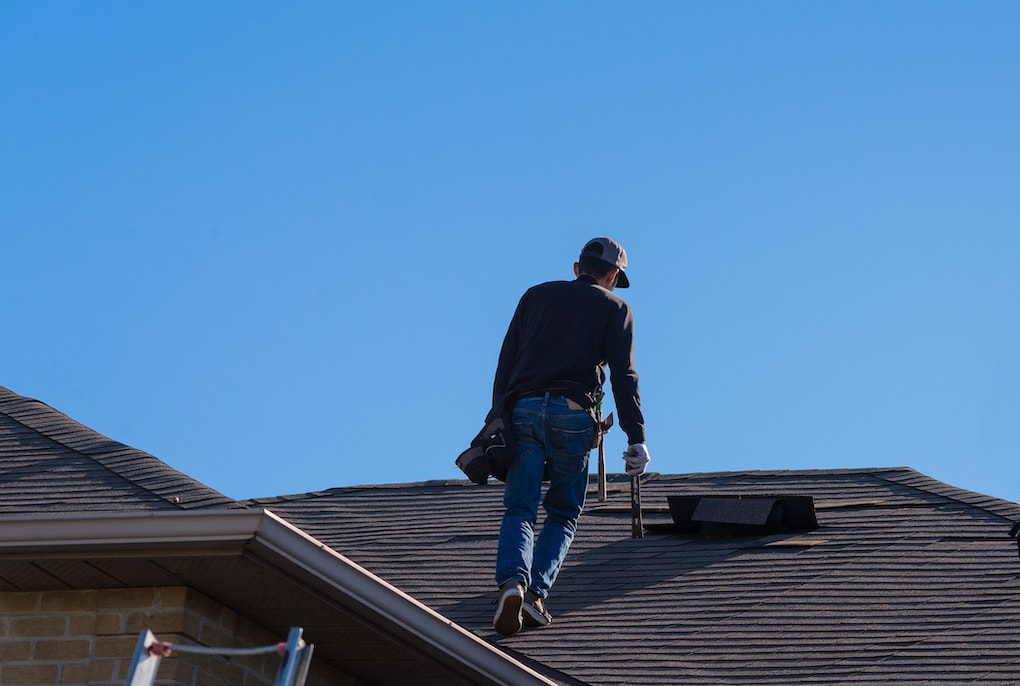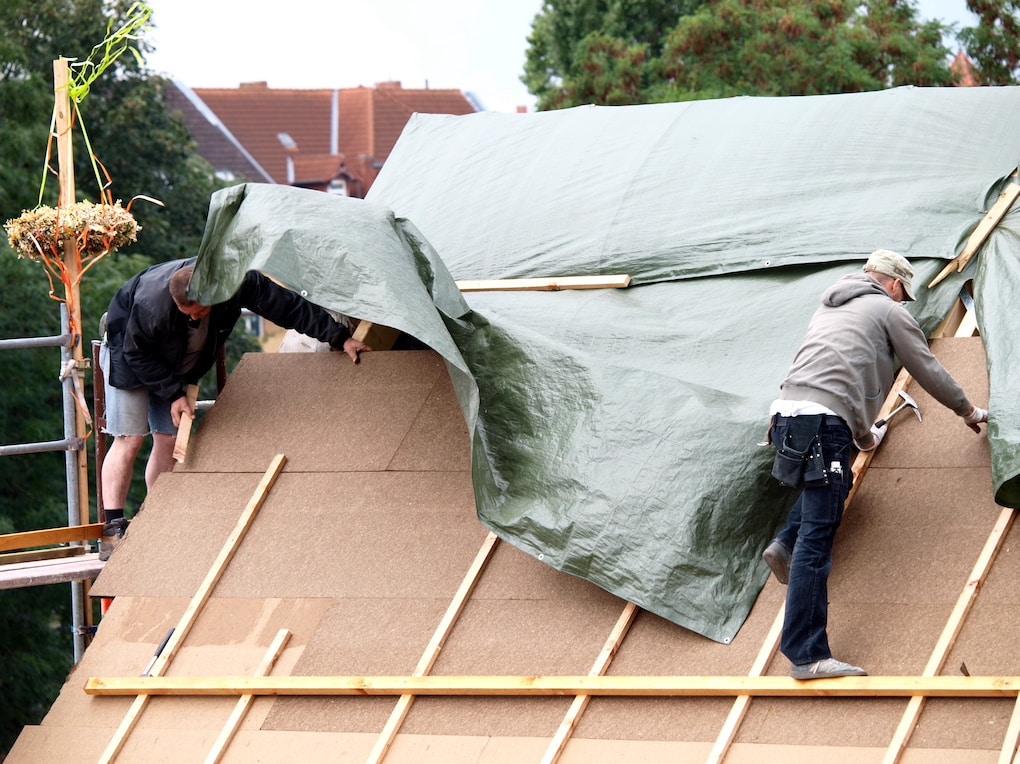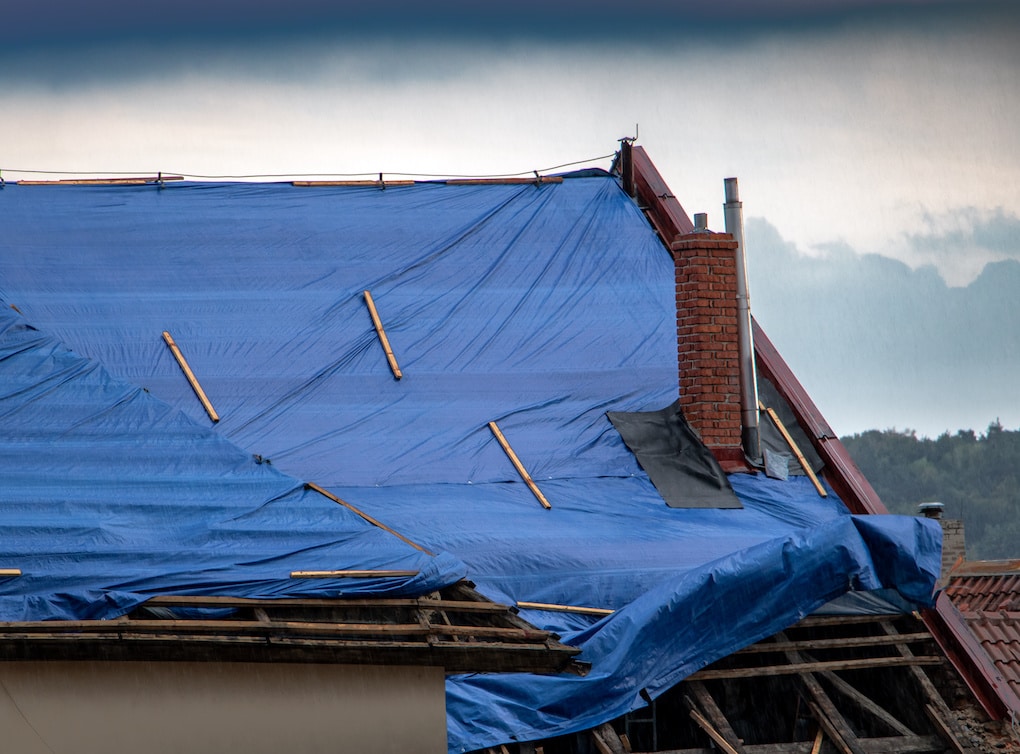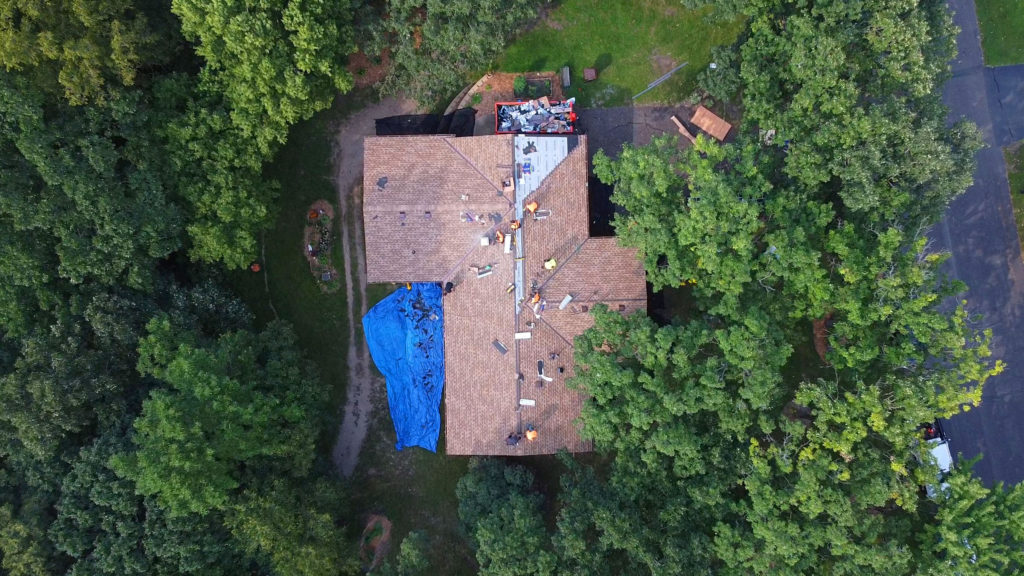After a harsh storm—especially in the winter—you may find yourself with a damaged or cracked roof, resulting in some pesky and unsafe roof leaks.
Water damage isn’t fun, and it can be expensive on top of the already necessary roof repairs, so it’s essential to take preventative measures to stop any further damage from happening.
If you have a leaky roof or another type of damage, it is crucial to know how to tarp a roof to protect your home from further problems. By properly tarping your roof, your home will be well-protected from additional damage while you work on a solution.
How To Tarp A Roof In 4 Steps:
Step 1: Check the Damage
Before starting the tarping process, you will want to have a good idea of what kind of damage you’re dealing with.
Put on any necessary safety equipment—such as anti-slip boots and safety gloves—and carefully clear any debris from the roof so you can see the full extent of the damage. If your roof is particularly steep, clear the debris while remaining on a ladder. You can also assess the damage by going into the attic or top floor of your home to look for watermarks and other signs of a leak or exposure to the elements.
Safety Reminder
Wait until after the storm has passed before going up on the roof to assess the damage and beginning the process to tarp a roof.

Step 2: Take Measurements
You will need to measure the damaged area of the roof to determine how big of a roof tarp you will need. Use measuring tape and take note of the accurate dimensions of the damage.
For the roof tarp, you will want it to match the size of the damage with at least four extra feet for hanging over the peak of the roof. It is better to get a tarp that is too big than too small—there’s no point in setting up a tarp if the damaged area is still vulnerable!
If there is any excess tarp, it can safely hang over the edge.
Step 3: Place the Tarp
Now that you have the correctly sized roof tarp, you will need to properly arrange it over the damaged section of the roof. Using securing tools such as sandbags or an anchor board, position the tarp over the damage and arrange the overhang along the peak and edge of the roof.

To make an anchor board, roll a two by four wooden board into the end of the tarp that will go over the roof’s peak. Secure the tarp to the board using cap nails, positioning it on the roof to collect any debris or snow. This is a helpful measure for further protecting the damaged area of the roof.
You can temporarily screw the anchor board to the roof with cap nails that are long enough to penetrate the tarp, board, shingles, and decking.
Sandwich the Tarp
This process can be repeated to sandwich the tarp tight and keep it taut, applying additional wooden boards on top of the tarp. Anchor boards can be placed on the other peak ends of the tarp, ensuring that it is properly weighed down and stretched out over the damaged area of the roof.
Be sure to get at least two people working on positioning the tarp—tarps can be unwieldy to manage alone, and when working on a roof, you will want a partner to back you up.

Step 4: Fully Secure the Tarp
Securing the tarp involves using a screw gun to get through the layers of anchor boards into the shingles and decking underneath. Remember to get the shingles replaced after the tarp has been removed and the rest of the roof repairs have been completed.
If needed, screw-in additional anchor boards along sections of the tarp’s edges where necessary. The idea is to have the tarp secure and taut over the entire section of the damaged roof.
This same method of tarping your roof can also be used preemptively before a storm if you already know there is a vulnerable section on the roof and you want to prevent further damage.
Get help From The Pros!
Although knowing how to tarp a roof is a practical and very effective temporary solution, you will still need to have the damage inspected and repaired.
Reach out to the K&D team so that we can help repair and protect your roof from storms.


